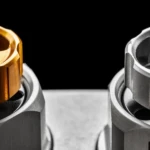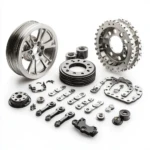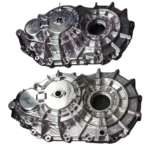Optimizing Vertical CNC Towers: Unlocking Precision and Efficiency in Modern Manufacturing
In the realm of modern manufacturing, vertical CNC towers have emerged as a crucial piece of equipment, playing a pivotal role in determining the overall performance of machine tools. The precision and accuracy of these machines are paramount, as they directly impact the quality of the parts produced and the efficiency of the manufacturing process. In this article, we will delve into the world of vertical CNC towers, exploring the key indicators that measure their performance, the factors that affect their accuracy, and the strategies that can be employed to optimize their operation.
Understanding Positioning Accuracy
Positioning accuracy is a critical indicator of a vertical CNC tower’s performance, referring to the difference between the actual position of the tool or part and the predefined theoretical position during machining tasks. This metric is directly linked to the machining precision and the overall quality of the parts produced. The positioning accuracy of a vertical CNC tower is influenced by a variety of factors, including:
- Mechanical structure rigidity: A rigid mechanical structure is essential for minimizing vibrations during the processing process, which can cause deviations from the theoretical position.
- Transmission chain difference: The accuracy of the transmission components, such as ball screws and linear guides, can significantly impact the positioning accuracy.
- Control system algorithm accuracy: The precision of the control system algorithm and sensor resolution are critical in controlling the movement of the machine and ensuring accurate positioning.
- Sensor resolution: The resolution of the sensors used in the machine tool can affect the accuracy of the positioning data.
To improve the positioning accuracy of a vertical CNC tower, several measures can be taken, including:
- Optimizing design and selecting high-quality materials: Strengthening the overall rigidity of the tooltip and reducing vibrations during the processing process.
- Using high-precision transmission components: Implementing high-precision ball screws, linear guides, and other transmission components to minimize the difference in the transmission chain.
- Improving control system algorithm accuracy and sensor resolution: Enhancing the precision of the control system algorithm and sensor resolution to ensure accurate positioning and control.
The Importance of Repeated Positioning Accuracy
Repeated positioning accuracy refers to the consistency of the results when the tool performs the same treatment tasks multiple times under the same conditions. This metric reflects the stability and reliability of the machine tool, which is particularly important for parts that require mass production. The accuracy of repeated positioning is directly linked to the coherence of products and the success rate.
The factors that affect the accuracy of repeated positioning of vertical CNC towers include:
- Mechanical properties of the tool machine: The mechanical properties of the machine tool, such as wear and tear, can impact the accuracy of repeated positioning.
- Stability of the control system: The stability of the control system and its ability to maintain precise control over the machine tool’s movements.
- Operator’s skill level: The competence of the operator in controlling the movement and treatment of the tool can significantly impact the accuracy of repeated positioning.
To improve the precision of repeated positioning, several strategies can be employed, including:
- Regular maintenance and maintenance: Ensuring the normal operation and stable precision of each component through regular maintenance and maintenance.
- Optimizing control algorithm and parameter parameters: Reducing the impact of external interference on the processing process by optimizing the control algorithm and parameter parameters.
- Improving operator’s level of competence: Enhancing the operator’s skills and knowledge to enable more precise control over the movement and treatment of the tool.
Enhancing the Performance of Vertical CNC Towers
The positioning precision and repeated positioning accuracy of vertical CNC towers are essential indicators of their performance. To optimize the operation of these machines, several key strategies can be employed:
- Strengthening the rigidity of machine tools: Optimizing the design and selecting high-quality materials to minimize vibrations and improve positioning accuracy.
- Optimizing transmission components: Implementing high-precision transmission components to reduce the difference in the transmission chain.
- Improving control system accuracy and stability: Enhancing the precision of the control system algorithm and sensor resolution to ensure accurate positioning and control.
- Regular maintenance and maintenance: Ensuring the normal operation and stable precision of each component through regular maintenance and maintenance.
- Improving operator’s level of competence: Enhancing the operator’s skills and knowledge to enable more precise control over the movement and treatment of the tool.
By implementing these strategies, manufacturers can significantly improve the performance of their vertical CNC towers, achieving enhanced precision, efficiency, and productivity in their manufacturing operations.
Conclusion
In conclusion, vertical CNC towers are a critical component of modern manufacturing, and their performance is directly linked to the quality of the parts produced and the efficiency of the manufacturing process. By understanding the key indicators that measure their performance, the factors that affect their accuracy, and the strategies that can be employed to optimize their operation, manufacturers can unlock the full potential of these machines. By optimizing the design, selecting high-quality materials, improving control system accuracy and stability, and enhancing operator competence, manufacturers can achieve enhanced precision, efficiency, and productivity in their manufacturing operations.
















